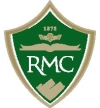An intro flight of some kind is obviously the best place to start. Doesn't matter if it's the airplane or school you definitely want, just get up there and get an idea of what it's all about.
Some schools are a good deal, but assuming you (and your folks) aren't made of money, you should consider a flying club that has member-instructors... this is usually a much cheaper way to complete the PPASEL. It's also usually a more social and supportive atmosphere.
But not all clubs are worth joining, same as with all flight schools. Shop around,
ask local pilots, and be sure to consider all factors: getting to and from the airport, operational cost of the aircraft, etc.
If you sign up with a flight school, be very wary of making a big deposit (to get an hourly discount). More than one eager student has shown up for a lesson and discovered the school has packed up and left overnight, without notifying anyone. If this happens with a club, you are actually more likely to get your buy-in money back, as the principals usually aren't going anywhere.
Other than schools and clubs, another option is to hook up with an independent instructor. This is usually a word-of-mouth thing, not easy to coordinate... and most of them do not instruct in their own planes, which complicates matters. But they are out there, and some of them are excellent teachers who are not looking to build hours or take all your money. So be sure to
ask around... or put up a flyer at the nearest small airport, etc.
Not sure what your long-term flying goals are, but if you are looking to fly professionally some day, don't sign on with some fancy outfit for the PP because they've convinced you they will make a pro out of you in no time. You'll be paying for a lot of crap you don't need. Be especially wary of the "zero time to ATP in 6 months- guaranteed airline interview- only $60,000!" outfits; most of them are a total ripoff.
The check ride examiner will not care if your instructor wears a tie and has a big watch... for the PP, just about any training plane, instructor, or environment is adequate, as long as you learn what you need to learn. The plane can be brand-new with all the latest bells and whistles, or a 60-year-old Champ with no radio and patches in the fabric, it doesn't matter. The ground classes can be in a fancy classroom with fake plants and slide shows, or it can be you and the CFI sitting on the hood of the car in the parking lot talking about the curriculum... it doesn't matter.
A final thought:Gliders!
A glider club is the cheapest way to start, and you can solo a glider at 14, get your PP-glider at 16, and your commercial and CFI tickets in gliders at 18. It is challenging enough to make you feel like you are really earning your wings, but simpler than the ASEL curiculum, and easier to proceed rapidly. Teens seem to take to gliding like fish to water- the success rate is very high.
This is a great way for a guy your age to get a very solid foundation of flying skills built, network with all sorts of pilots at the home base, and learn about the world of aviation, without spending an arm and a leg. Moving on from there to powered aircraft is easily done and much simpler (and cheaper!) because you will already have your foundation of skills and PIC attitude built up.
Notable glider pilots: "Sully" Sullenberger (the guy who successfully ditched an A320 in the Hudson recently), and Neil Armstrong (the guy who made the first landing on the Moon- with the autopilot off!). And oh yes, the Wright Bros. started in gliders...

These guys might be able to help you, if you are interested in starting in gliders:
http://www.norcalsoaring.org/And here's where I got that info... a great source of general information on soaring:
http://www.ssa.org/ 8-)
8-) 8-)
8-)




















